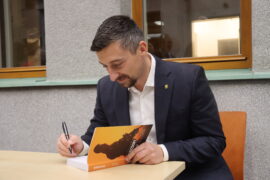
01 Cutaway of Austro-Hungarian Machinegun Schwarzlose 1907/12 Model, Calibre 8 mm Mannlicher M. 93
Fotogalerie
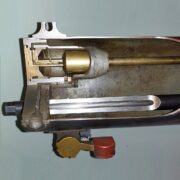
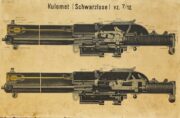
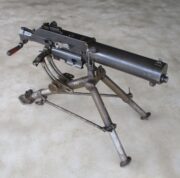

The backbone of the infantry armaments of the Austro-Hungarian Army were Schwarzlose M.7 and M.7/12 machine guns in 8 mm Mannlicher M. 93 calibre. It was not a domestic design. The weapon bore the name of its creator, German designer Andreas Wilhelm Schwarzlose (1867–1936), owner of the Suhl armoury (Waffenfabrik Schwarzlose, Suhl), from whom the Styrian armoury (Oesterreichische Waffenfabriks- Gesellschaft – OEWG) purchased the production rights in early 1905. The reasons why the Austrian army introduced a design that was not very well proven at the time were mainly due to the lower production costs caused by the smaller number of components in the weapon.
Although the Styrian armoury began production of the machine guns in 1905, due recommendation of a technical military commission the official introduction into the service was not until the January 8th 1908 as 07 Model.
Over the years, the redesign of the breech mechanism and minor modifications (including a vertical direction to fold the grips, modification of the breech and the shape of the breech cover, reconstruction of the steam overflow valve) resulted in the final model 7/12, which is also characterised by a higher theoretical firing rate compared to the original M 7 model. While at the beginning of the war the Austrian army had around 4,000 Schwarzlose machine guns at its disposal, by the end of the war in 1918, the total production of the Styrian armoury had reached 52,000 pieces.
The heavy, water-cooled Schwarzlose machine gun operated on the principle of delayed breech opening, closed by a set of levers. The mechanism was supplemented by automatic oil injection to ensure reliable operation during breech opening and cartridge extraction. The front of the breech cover contained an oil container, closed from above by a circular cap. The barrel was surrounded by a cylindrical radiator filled with three litres of water. A relief valve at the front of the cooler was used to release steam during prolonged firing when the contents of the cooler would start to boil. Smoke fumes during firing were enhanced by the combustion of oil injected into the space in front of the cartridge chamber. In this respect, the Schwarzlose machine gun was not well suited for intensive firing in confined spaces without functioning exhaust or natural air circulation.
The weapon was fed by a woven textile belt, loaded with 250 rounds of 8 mm Mannlicher M 93. The weapon’s feeding device included a coil located in the lower part on the right side of the breech housing. The cartridges were pulled out of the belt by the lower tooth of the bolt at the stage when the bolt was moving backwards. The theoretical firing rate was 520 rounds per minute (only 400 rpm for the original M 7), but a number of factors influenced the rate of fire: brand new or water-soaked or frozen cartridge belts increased the passive resistance of the cartridges as they were pulled from the belt, decreasing the rate of fire. Therefore, it was necessary to pay due attention to the condition of the belts.
The weight of the weapon itself, without a filled radiator and oil tank, was 17.2 kg; with oil and water it was 22.7 kg. The three-legged base, allowing adjustment to firing heights of 250, 450 and 600 mm, weighed 18.5 kg. Adding the weight of the 20 kg shield (Schutzschild M 7/9), the whole machine gun in firing position was 61.2 kg when moved, but this is without any cartridges. In addition, the strength versions had an armoured shield on the radiator, which protected the relatively thin radiator body from the destructive effects of artillery shells. During the war, the effort to lighten the entire set led to the development of a light but not very stable tripod, so that the weight of the weapon without the shield dropped to 28.5 kg. Adaptations also came into play during the war, consisting of attaching the bipod to the gun’s radiator, which increased the machine gun’s mobility.
Aktuálně
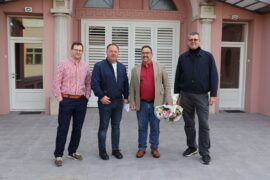
Výzkum u českých krajanů v Chorvatsku
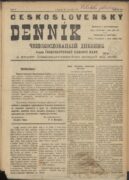
Československý deník sehrál v životě legionářů v Rusku velmi důležitou roli. Poprvé vyšel v prosinci 1917

Děkujeme za podporu pro válečné veterány. Sbírka DiGiMÁK vynesla 450 tisíc korun
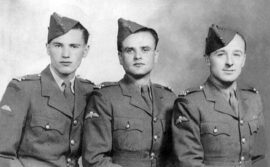
Tak trochu zamrzlé spojení
